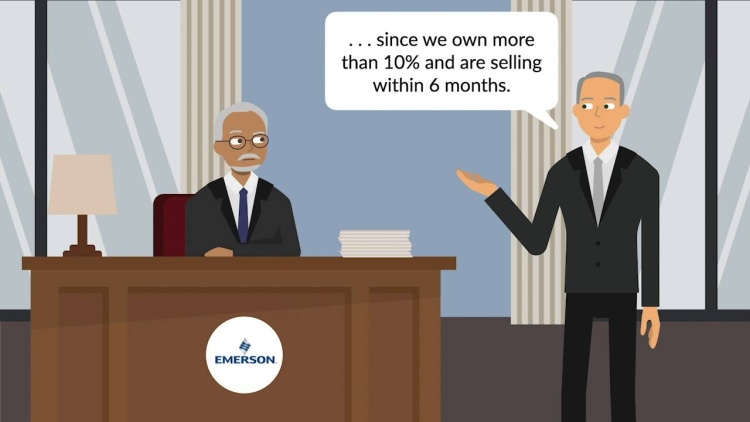Reliance Electric Co. v. Emerson Electric Co.
United States Supreme Court
404 U.S. 418, 92 S. Ct. 596, 30 L.Ed.2d 575 (1972)

- Written by Sean Carroll, JD
Facts
In June 1967, Emerson Electric Co. (Emerson) (plaintiff) bought 13.2 percent of the outstanding stock in Dodge Manufacturing Co. (Dodge) at $63 per share. Within six months thereafter, Dodge merged with Reliance Electric Co. (Reliance) (defendant), at which time the stock was priced at $68 per share. Emerson did not want to own shares of the new merged entity, but also did not want to pay Dodge all of the profits it was going to earn by selling the stock under Section 16(b) of the Securities Exchange Act of 1934 (Section 16(b)). To get around the requirement, Emerson sold enough of its shares in the merged entity to bring it below the 10 percent threshold prescribed in Section 16(b). Emerson paid the profits from that sale to Dodge as required in Section 16(b) and then sold the remainder of its shares for $69 per share. Emerson did not pay Dodge the profits from its second sale because at the time of that sale, as a result of the first sale, Emerson owned only 9.96 percent of Dodge’s shares. Reliance made a demand for the profits from the second sale, and Emerson filed an action seeking a declaratory judgment that it did not have to pay those profits to the Reliance/Dodge entity. The district court found Emerson liable for the profits, but the court of appeals reversed. Reliance appealed.
Rule of Law
Issue
Holding and Reasoning (Stewart, J.)
What to do next…
Here's why 899,000 law students have relied on our case briefs:
- Written by law professors and practitioners, not other law students. 47,000 briefs, keyed to 994 casebooks. Top-notch customer support.
- The right amount of information, includes the facts, issues, rule of law, holding and reasoning, and any concurrences and dissents.
- Access in your classes, works on your mobile and tablet. Massive library of related video lessons and high quality multiple-choice questions.
- Easy to use, uniform format for every case brief. Written in plain English, not in legalese. Our briefs summarize and simplify; they don’t just repeat the court’s language.





